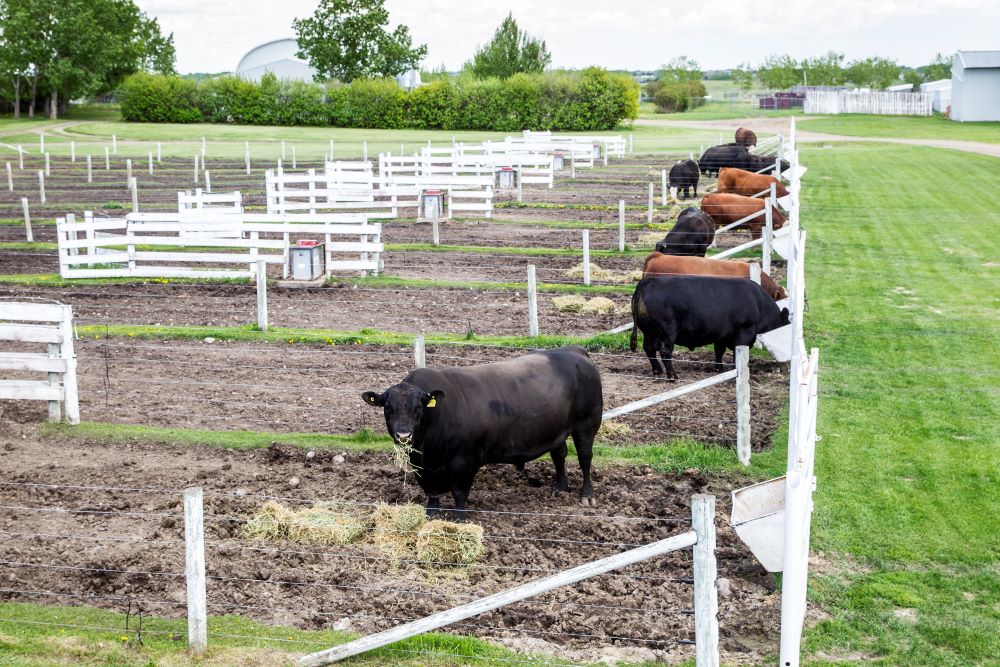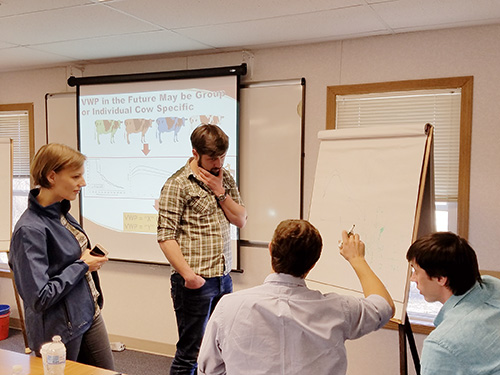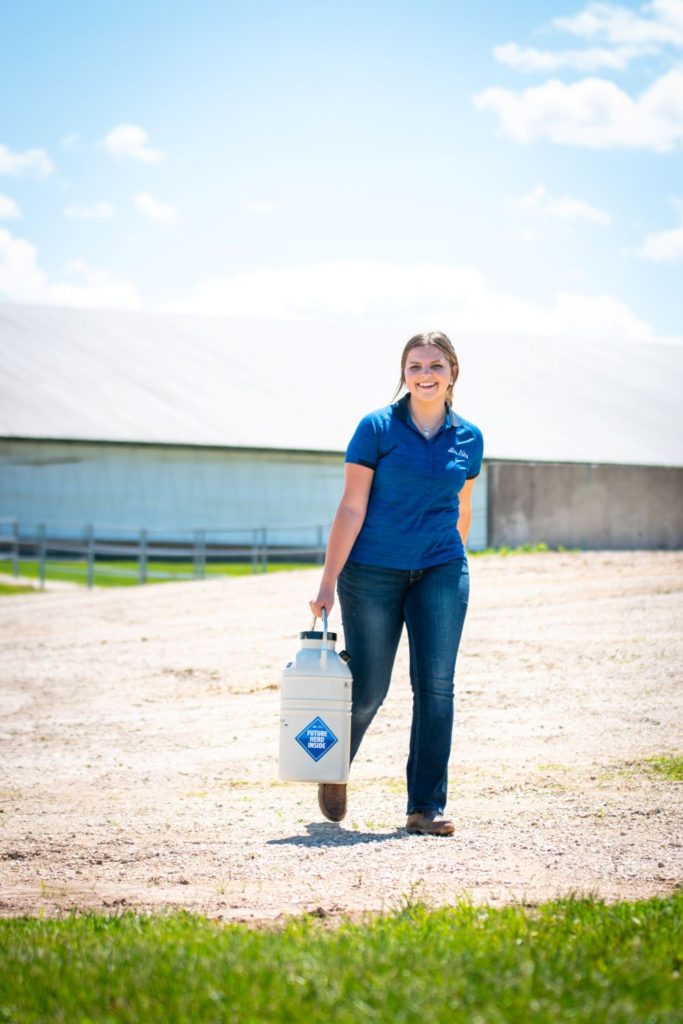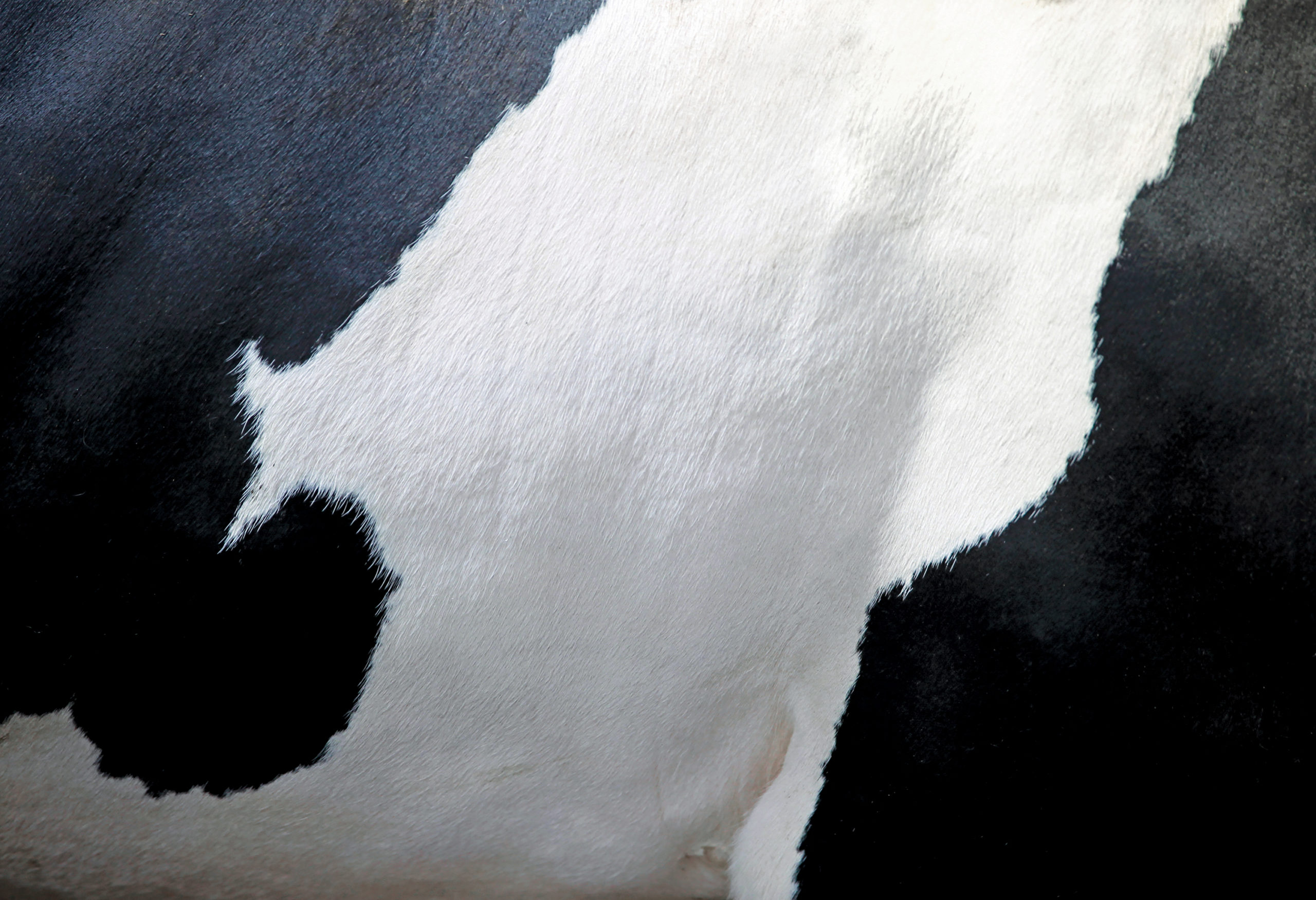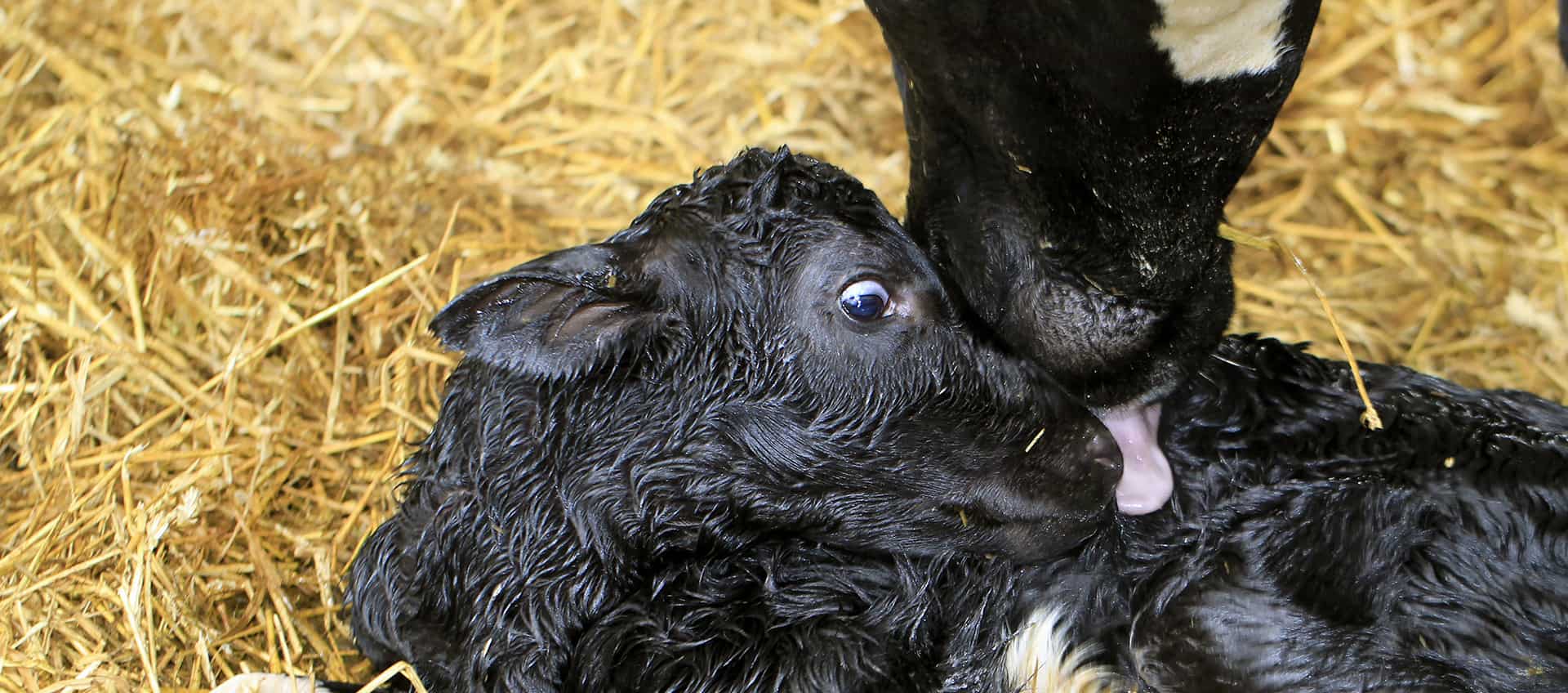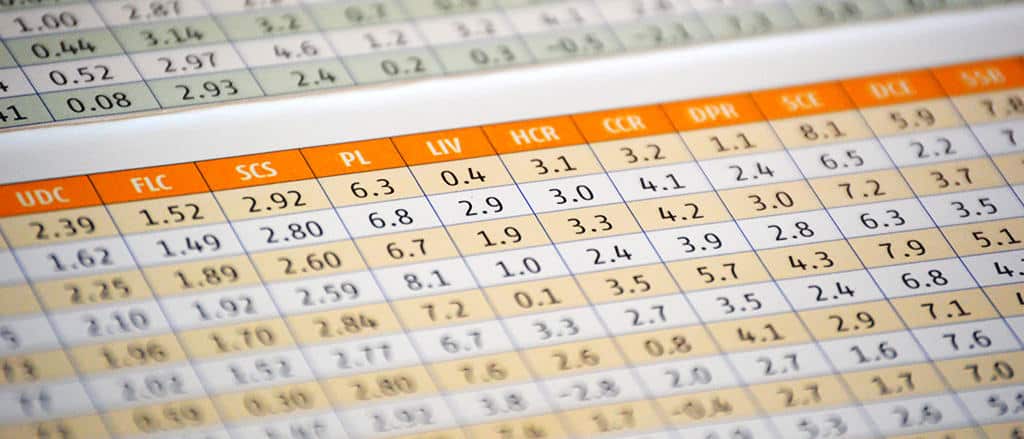A genetic base change is an adjustment of predicted transmitting abilities (PTAs) for all animals in a given breed. This change resets the average PTAs for each trait within a new reference population back to zero.
With the April 2020 US genetic base change in mind, here are five key points to remember.
1. THE BASE CHANGE HAPPENS EVERY 5 YEARS.
It happens this frequently to ensure that the values for traits and indexes don’t grow to unrealistically high levels. The last base change took place in December 2014, and the next one will be in 2025.
2. THIS BASE CHANGE ACCOUNTS FOR THE AMOUNT OF GENETIC PROGRESS WE’VE MADE SINCE THE LAST BASE CHANGE.
Dairy cattle genetics are continually improving, and the base change is the way to quantify the actual amount of progress that we’ve made for each trait within each breed.
For example, the base change for PTA Milk in the Holstein breed is 492. That means that the average genetic level for pounds of milk in the Holstein breed has increased by 492 pounds over the past five years. To account for this progress, the PTA Milk value for all Holsteins will automatically decrease by 492 pounds with April 2020 proofs.
3. THE NEW REFERENCE POPULATION WAS BORN IN 2015.
The base change means resetting the average PTAs for the reference population to zero. The previous reference population was made up of the sire-identified animals born in 2010. Since the new reference population is animals born in 2015, that means this current base change will now set the average PTA of cows born in 2015 back to zero.
4. DOWNWARD ADJUSTMENTS ARE ACTUALLY A GOOD THING!
In general, a downward adjustment for a trait is the amount of genetic progress we’ve made for that trait. So a larger downward adjustment is actually a good thing – it just means we’ve made that much more genetic progress for that given trait!
Because of the downward adjustments, we’ll need to get used to new, generally lower reference levels for the traits and indexes that we affect our genetic selection decisions.
5. THE BASE CHANGE DOES NOT AFFECT THE RELATIVE RANK OF ANIMALS.
Even though the base change will cause PTA values for bulls and cows to appear lower for most traits, it is the same adjustment for all animals. That means individual rankings will not be impacted.https://player.vimeo.com/video/398932732?dnt=1&app_id=122963
WHAT ARE THE ACTUAL CHANGES?
Wondering what the actual changes will be? Table 1 below lays it all out.
Because a positive value is the amount of progress we’ve made, it also means the PTA for that trait will decrease by this amount. Conversely, negative values mean the PTA for that trait will actually increase by that amount.
To clearly assess the overall picture of genetic progress, trait changes shown in black show positive progress. Traits shown in red have made negative progress over the past five years.
*Please note that the CDCB will recalculate these values with April 2020 proofs using more complete and current data. So there may be slight changes between now and then.*
Table 1. PTA difference of cows born in 2015 compared to those born in 2010. PTAs will decrease by these amounts in April 2020.
| TRAIT | UNITS | HOLSTEIN | JERSEY | BROWN SWISS |
| Milk | Pounds | 492 | 524 | 214 |
| Fat | Pounds | 24 | 25 | 8 |
| Protein | Pounds | 18 | 20 | 8 |
| Productive life | PL | Months | 1.86 | 1.54 | 0.24 |
| Daughter pregnancy rate | DPR | % | 0.24 | -0.99 | -0.62 |
| Somatic cell score | SCS | Log base 2 units | -0.08 | 0 | 0 |
| Heifer conception rate | HCR | % | 0.5 | 0.44 | -0.24 |
| Cow conception rate |CCR | % | 0.38 | -0.9 | -0.74 |
| Cow livability | LIV | % | 0.74 | 0.08 | -0.28 |
| Displaced abomasum | DA | % | 0.21 | – | – |
| Ketosis | KET | % | 0.2 | – | – |
| Mastitis | MAST | % | 0.6 | – | – |
| Metritis | MET | % | 0.34 | – | – |
| Milk fever | MFEV | % | -0.06 | – | – |
| Retained Placenta | RP | % | 0.05 | – | – |
| Early first calving | EFC | Days | 1.5 | 1.4 | 0.5 |
| Gestation length | GL | Days | -0.35 | 0.3 | -0.03 |
| Sire Calving Ease | SCE | % | -0.4 | – | -0.3 |
| Daughter Calving Ease | DCE | % | -1.9 | – | -0.6 |
| Sire Stillbirth | SSB | % | -0.3 | – | – |
| Daughter Stillbirth | DSB | % | -1.6 | – | – |
| Final Score (PTAT) | Points | 0.76 | 0.7 | 0.4 |
| Udder composite | UDC / JUI | 0.85 | – | – | |
| Feet and leg composite | FLC | 0.49 | – | – | |
| Lifetime Net Merit | NM$ | Dollars | 231 | 191 | 60 |
| Lifetime Cheese Merit | CM$ | Dollars | 239 | 196 | 63 |
| Lifetime Fluid Merit | FM$ | Dollars | 219 | 179 | 56 |
| Lifetime Grazing Merit | GM$ | Dollars | 207 | 142 | 38 |
| Stature | Points | 0.47 | 0.5 | 0.6 |
| Strength | Points | 0.2 | 0 | 0.2 |
| Dairy form | Points | 0.38 | 0.4 | 0.3 |
| Foot angle | Points | 0.5 | 0.1 | 0.1 |
| Feet and leg score | 0.54 | |||
| Rear legs – side view | Points | -0.02 | 0 | 0.1 |
| Rear legs – rear view | 0.49 | |||
| Body depth | 0.14 | |||
| Rump angle | Points | -0.02 | 0.4 | 0 |
| Rump width | Points | 0.36 | 0.1 | 0.1 |
| Fore udder attachment | Points | 1.01 | 0.7 | 0.3 |
| Rear udder height | Points | 1.2 | 0.6 | 0.3 |
| Rear udder width | Points | 1.16 | 0.2 | 0.3 |
| Udder depth | Points | 0.84 | 0.9 | 0.2 |
| Udder cleft | Points | 0.54 | 0.1 | 0.1 |
| Front teat placement | Points | 0.52 | 0.3 | 0.3 |
| Rear teat placement | 0.49 | |||
| Teat length | Points | -0.27 | 0 | -0.2 |
| Body weight composite | 0.15 |
HOW DOES THIS COMPARE?
Are you curious how the amount of progress over the past five years compares to the progress we made before that? The tables below lay it all out for the Holstein and Jersey breeds.
| HOLSTEIN BASE CHANGE COMPARISON | Milk | Fat | Prot | PL | DPR | NM$ |
| 2020 CHANGES (progress made from 2015-2020) | 492 | 24 | 18 | 1.9 | 0.24 | 231 |
| 2015 CHANGES (progress made from 2010-2015) | 382 | 17 | 12 | 1.0 | 0.2 | 184 |
| JERSEY BASE CHANGE COMPARISON | Milk | Fat | Prot | PL | DPR | SCS | NM$ |
| 2020 Changes (progress made from 2015-2020) | 524 | 25 | 20 | 1.54 | -0.99 | 0.00 | 191 |
| 2015 Changes (progress made from 2010-2015) | 382 | 19 | 12 | 0.8 | 0.0 | 0.04 | 124 |


